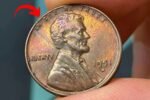Imagine reaching into your pocket for some spare change and finding a penny that could pay for a luxury car—or even cover the down payment on a house. It sounds unbelievable, right? Yet this isn’t just a collector’s dream or an internet rumor. There really is a Lincoln Wheat Penny that has been valued at a jaw-dropping $144,000, and there’s a small chance it could still be circulating among everyday coins.
This fascinating bit of numismatic history proves that not all pennies are created equal. While most are nearly worthless in today’s economy, the right one could change your financial story forever. Let’s explore why this particular penny is so valuable, how you can identify it, and why the Lincoln Wheat Penny continues to hold a special place in the world of coin collecting.
New 2025 SASSA Grant Payment Revealed – Here’s What You Need to Know
What Makes the Lincoln Wheat Penny So Special?
To understand why a penny can be worth more than a brand-new car, we have to look back to the early 20th century. The Lincoln Wheat Penny was first introduced in 1909, replacing the Indian Head cent. It featured President Abraham Lincoln on the obverse (front), making it the first U.S. coin to feature a real person.
On the reverse (back), instead of the Lincoln Memorial seen on newer pennies, these early coins had two stalks of wheat framing the words “ONE CENT” and “UNITED STATES OF AMERICA.” Hence the nickname: Lincoln Wheat Penny.
These coins were minted until 1958, and most of them are worth only a few cents or perhaps a few dollars in pristine condition. But certain versions—due to unique errors, metal compositions, or limited mintages—are now prized by collectors and can fetch thousands of dollars.
The 1943 Bronze Lincoln Wheat Penny: A $144,000 Mistake
The most talked-about and highly valued Lincoln Wheat Penny is the 1943 bronze version. During World War II, the U.S. government needed copper and tin for ammunition and other war supplies. To save on resources, the U.S. Mint switched to using zinc-coated steel for pennies minted in 1943.
However, a tiny batch of bronze blanks—left over from 1942—accidentally remained in the coin press machines. These blanks were used to strike a small number of 1943 pennies in the usual copper alloy. This wasn’t caught at the time and went completely unnoticed. As a result, these 1943 bronze Lincoln Wheat Pennies are now among the rarest and most valuable U.S. coins in existence.
How rare? Only a few dozen authentic examples have been confirmed to date. One sold at auction for $144,000, and others have reached similar six-figure amounts depending on condition and provenance.
Could This Rare Lincoln Wheat Penny Still Be Out There?
The truly exciting part is that these rare pennies weren’t officially recorded or pulled from circulation. That means some of them may still be hiding in plain sight—in old change jars, family piggy banks, antique desk drawers, or even tucked into the cash register at your local store.
The mystery and randomness of where one might show up is what makes the Lincoln Wheat Penny so thrilling for collectors and casual coin hunters alike. Imagine the life-changing discovery of stumbling upon one in your own home or during a routine grocery run.
How Can You Tell If You Have the $144K Penny?
Spotting a valuable Lincoln Wheat Penny doesn’t require a degree in numismatics, but you do need to know what to look for. Here’s how to narrow down your search:
1. Check the Date
Look for the year 1943. That’s the key year when the mint used steel instead of copper. If your penny says 1943 but looks like it’s made of copper or bronze, you may have something special.
2. Inspect the Material
Steel pennies from 1943 are silver-gray and often appear dull or worn due to oxidation. However, the rare bronze versions will look like the usual copper penny—reddish-brown in tone.
3. Do the Magnet Test
Steel is magnetic. Copper and bronze are not. If your 1943 penny doesn’t stick to a magnet, it could be a bronze error.
4. Weigh the Coin
If possible, weigh the penny. Steel pennies weigh about 2.7 grams, while bronze ones weigh around 3.1 grams. That small difference can be a huge clue.
If you think you might have found one of these valuable Lincoln Wheat Pennies, don’t try to clean or alter the coin. Instead, consult a professional coin dealer or a reputable appraiser. They’ll be able to authenticate it and help you understand its value based on condition, rarity, and demand.
Why the Lincoln Wheat Penny Still Matters
In a world increasingly obsessed with digital transactions and cryptocurrency, it’s easy to dismiss the humble penny. Yet the story of the Lincoln Wheat Penny reminds us of something powerful: sometimes, the most ordinary objects can hold extraordinary value.
There’s also something uniquely American about the Lincoln Wheat Penny’s journey. It features one of the nation’s most revered presidents, was minted during world wars and economic upheaval, and now symbolizes the treasure that can exist in our everyday lives.
For coin collectors, these pennies are more than just currency—they’re a tangible link to history. For everyone else, they serve as a reminder to slow down and pay attention. Who knows what rare gem might be hiding in that handful of change you nearly tossed aside?
A Booming Market for Lincoln Wheat Pennies
Over the last decade, interest in rare coins has seen a steady rise. With inflation and uncertain economic climates, tangible assets like collectible coins have gained appeal. And the Lincoln Wheat Penny—especially the rare variants—has become one of the most pursued coins by collectors and investors alike.
Auction houses regularly feature Lincoln Wheat Pennies among their top-selling items. And thanks to social media and online marketplaces, even non-collectors are joining the hunt. One viral story of a 1943 bronze penny turning up in an old coin jar can inspire thousands of people to begin sifting through their own collections.
But while the bronze 1943 is the crown jewel, other Lincoln Wheat Penny variants can also be worth substantial amounts. For example:
-
1909-S VDB: The first year of production, with designer initials—extremely valuable due to low mintage.
-
1914-D: Scarce and heavily sought after.
-
1922 “No D”: A Denver-minted coin with a missing mint mark—an unusual and valuable error.
These rare coins, though not quite at the $144K level, have also sold for thousands of dollars.
Final Thoughts: Don’t Underestimate the Lincoln Wheat Penny
The next time you receive a handful of coins as change, resist the urge to toss them into a jar without a second glance. Instead, take a moment to examine them—especially the pennies. You might just uncover a piece of history, or better yet, a financial windfall.
The story of the Lincoln Wheat Penny isn’t just about coin collecting. It’s about the thrill of discovery, the hidden value in overlooked places, and the unexpected surprises that can change your life. That $144,000 bronze penny proves that even the smallest items can hold the biggest potential.
So keep your eyes open. That little coin in your pocket might just be the treasure you never knew you had.
Disclaimer: This article is for informational purposes only and does not constitute financial advice. The value of coins can vary significantly based on condition, market trends, and authenticity. Always consult with a trusted numismatic expert before making any decisions related to coin collection or sales.
Some Important Link
| Telegram Group | Click Here |
| WhatsApp Group | Click Here |
| Home Page | Click Here |














